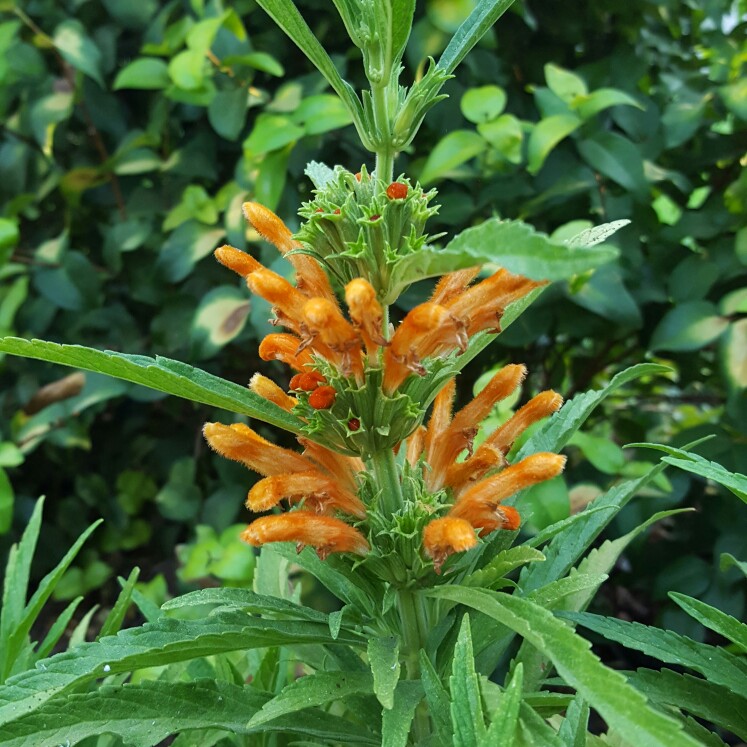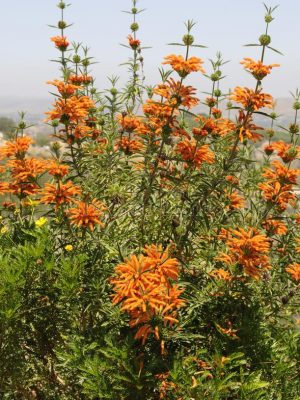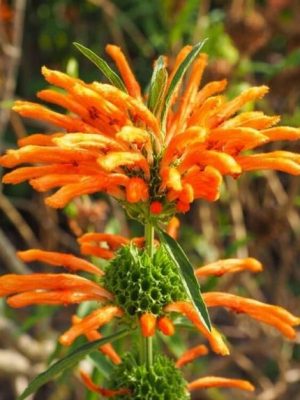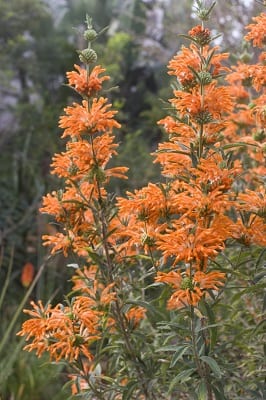Leonotis leonurus, commonly called Lion’s Tail or Wild Dagga, is native to South Africa.
It is a tropical shrub that can grow rapidly to 3-6’ tall in a single season from seed planted in the garden in early spring. Tubular two-lipped orange flowers (typical mint family) appear in tiered whorls that encircle the square stems. Flower petals purportedly resemble lions’ ears. Flowers bloom in fall from plants placed out in early spring. Oblanceolate to lance-shaped green leaves (to 2-4” long) are aromatic when bruised. It is common and widespread throughout South Africa where it grows amongst rocks and in grassland. Its distribution is more concentrated along the wetter eastern and southern seaboard. It is found is found in sandy, clayey, loam or stony areas, forest margins or rough grasslands at altitudes ranging from 5-1980 m.
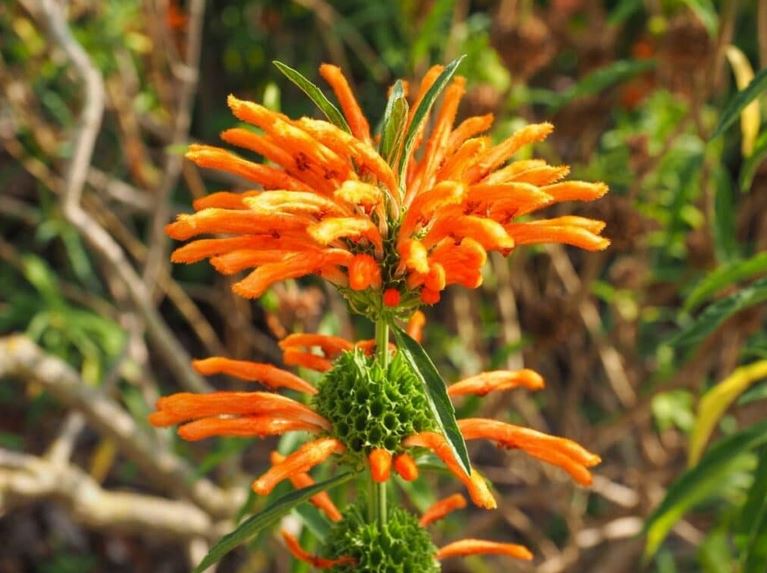
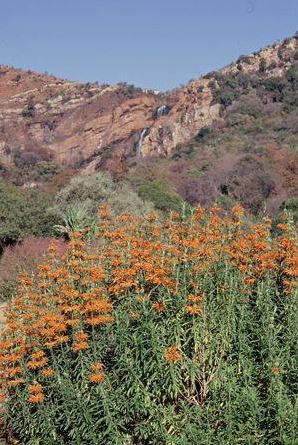
Leonotis leonurus contains a chemical constituent leonurine that has been reported to be used in traditional medicine for curing a wide range of ailments including headaches, coughs, fever, asthma, haemorrhoids and dysentery. A remedy concocted out of the leaf and root is also used in treating snakebites as well as a natural remedy or charm to keep snakes away. An infusion of the flower and leaf is used to treat tapeworm. The twigs of this plant can be added into a warm bath to soothe diseases such as itchy skin and helps to relieve cramps in the muscles. L. leonurus has also been reported as a slimming medicine. Animal studies done on mice and rats in 2005, South Africa have indicated that the aqueous leaf extract of L. leonurus contained anti-nociceptive, anti-inflammatory, and antidiabetic properties that could aid in the control of painful, arthritic, and other inflammatory
conditions including adult-onset, type-2 diabetes mellitus. However, in a study done on female rats in 2008 in South Africa, the results had shown that when rats were exposed to high doses of the extract of this species, it had adverse effects on their organs, caused changes in their red blood cells and caused death. Scientists had advised in this toxicology study that caution should be used when using this plant for medicinal purposes.
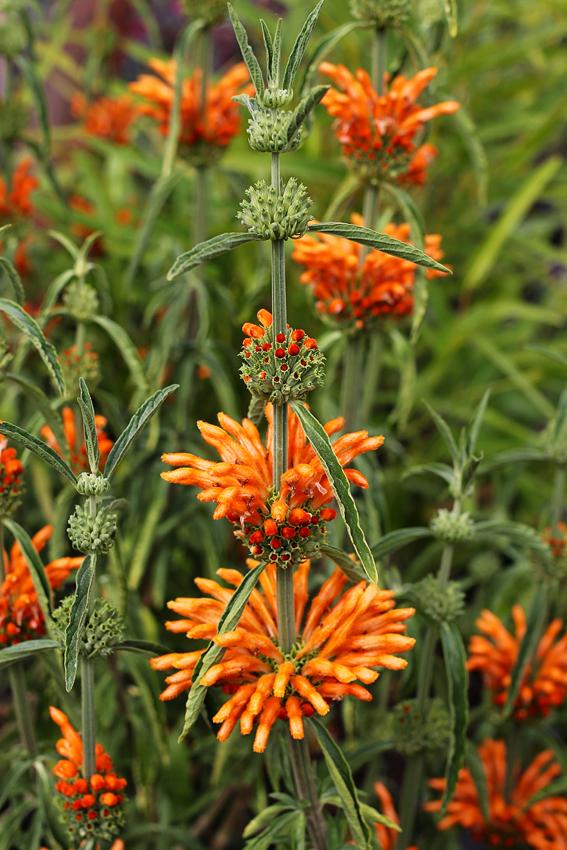
Early dwellers present in South Africa such as the Hottentot tribe or Khoikhoi, smoked the dry leaves and flowers which were said to have narcotic properties bringing on a calm sensation or euphoric feeling when smoked, hence the vernacular name wildedagga meaning wild dagga. It has been reported to be similar to Cannabis but not in any way related and is very mild and not as potent. It is one of the most effective legal herbal substitutes to smoking tobacco or cannabis. Users have reported to have experienced symptoms of mild excitement or elation, visual impairment, dizziness and light headedness, nausea, and sweating. The dried leaves can also be brewed to make an appetizing tea. In livestock it is used to treat cattle and fowl with Gall sickness. The sweet nectar is sucked from the base of the flowers by local children. Leonotis leonurus was one of the many Cape Plants taken to Europe for gardening purposes many years ago, it is reflected in the European gardening literature as early as 1673.
